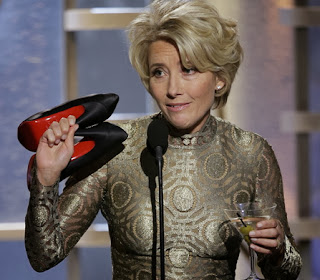If Ken Russell had ever made one of his notorious creative-genius biopics about Charles Dickens, and the famous, middle-aged Victorian novelist's secret love affair with teenage actress Nelly Ternan, one can only imagine the bombastic sturm und drang that would ensue.
Fortunately, Ralph Fiennes—in addition to being a marvelously subtle actor—is a filmmaker of much different mettle than Russell. In his second outing as a director, The Invisible Woman, in which he also stars as the charismatic Dickens, Fiennes does not give us the expected hothouse tale of illicit passion.
Instead, his film is a shrewdly observed portrait not only of the relationship between Dickens and Ternan, but between the artist and his public, and the larger milieu in which their story plays out.
Fiennes plays Dickens as a man of almost maniacal energy and bubbling bonhommie. At the height of his considerable artistic powers, he's an indefatigable actor in a play of his friend and colleague, Wilkie Collins (an irascible Tom Hollander, right, with Fiennes), as well as a popular orator whose readings of dramatic scenes from his own novels leaves audiences spellbound.
He's also a devoted family man who delights in his ten children. Yet he's increasingly unhappy in his longtime marriage to Catherine (Joanna Scanlan), a well-meaning but conventional woman who, he feels, can never be his equal in energy, intellect or sensibilities.
Ellen (Nelly) Ternan (Felicity Jones) is a dewy 18-year-old who, along with her mother, Frances (Kristin Scott Thomas), and two sisters, are engaged for roles in the Collins play. The Ternan women are a family of actresses, but Frances realizes that Nelly's "talent lies elsewhere."
 |
| Felicity Jones and Kristin Scott Thomas |
Nelly is a great fan of Dickens' novels, and converses with him avidly about them. When Frances notes that the novelist is, in turn, attracted to her youngest daughter, she encourages an attachment that might provide a better living for her daughter than the stage.
Thanks to a savvy script by Abi Morgan (The Iron Lady), based on the non-fiction book by Claire Tomalin, the story proceeds from the viewpoint of Ternan, it's protagonist, heroine, and occasional victim.
While Fiennes' Dickens lights up the screen with his warmth and creative pizzazz, it's Nelly's story that touches us as she (and we) face the ever-narrowing circle of options open to a single woman of that era with but a precarious means of earning a living and without male financial and social protection.
Meanwhile, director Fiennes pays loving hommage to the era that spawned Dickens and his work. Besides the Collins melodrama, staged with all the panache of a Vincent Crummels production, there's an eerie night ramble through the streets of London teeming with the impoverished and outcast, as well as a Fezziwig-worthy party of dancing, music, and magic tricks.
As in so many of Dickens' novels, the characters in The Invisible Woman are highly flawed, yet compelling in their unvarnished humanity. The film is a lovely gift to Dickens and his fans on the occasion (next week, February 7) of his 202nd birthday.






























